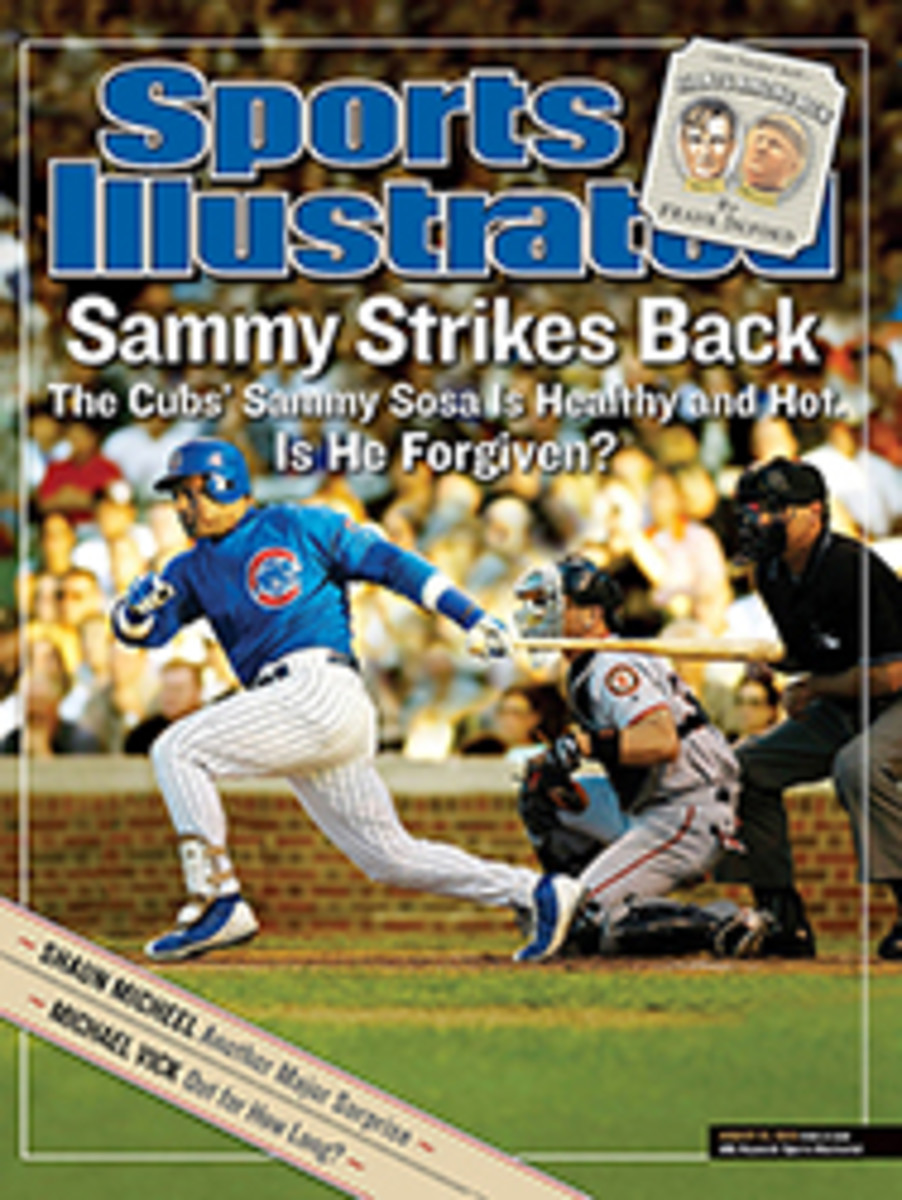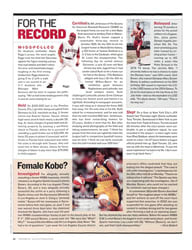
Wild Child At 14, U.S. striker Freddy Adu has the world at his feet and offers pouring in, but is he the superstar who'll finally make America fall in love with soccer?
Last week, at a quaint, evergreen-ringed stadium in Lahti,
Finland, scouts from Europe's most prestigious soccer teams came
to grips with the stunning news: The hottest prospect in the
world may be a 14-year-old American. Striker Freddy Adu (SI,
March 3) didn't merely score four goals in two games at the
under-17 world championship. He did so with a breathtaking whoosh
that defied the imagination. "In every other form of art--music,
dance, painting--history throws up a phenomenon," said Barry
Whitbread, Liverpool's director of youth recruitment. "He may be
one of them." One Premier League scout simply said, "He's going
to be the best player in the world someday."
U.S. under-17 coach John Ellinger thinks Adu will make the 2006
World Cup team, and last week's performance gave no reason to
doubt him. Adu's hat trick in a 6-1 win over South Korea included
one goal in which he zigzagged through four opposing players on a
45-yard run. In Sunday's 2-1 victory against Sierra Leone, Adu
overcame constant fouls and disgraceful refereeing to score the
last-second game-winner. "You're getting hit the whole game, not
getting any calls, and the opposing team is talking all this
trash," Adu said afterward. "The only way to shut them up is to
get a goal. It just breaks them."
Adu is about to break the bank, too. He signed a $1 million
contract with Nike in May, and by week's end his agent, Richard
Motzkin, had met with reps from Manchester United, AC Milan,
Barcelona and PSV Eindhoven. But don't ticket Adu for Europe just
yet. Sensing the Tiger Woods-like buzz that Adu might generate
with U.S. sports fans, Major League Soccer launched its own
offensive last week, sending deputy commissioner Ivan Gazidis to
Finland to meet with Adu's mother, Emelia, an employee at Home
Depot.
Nobody doubts that Adu will sign a lucrative deal somewhere. But
where will he have the best chance to improve? In recent years,
player development in soccer has reversed the trend found in
basketball; thanks largely to the U.S. Soccer Federation's
residency program for top youth players, Americans are catching
up to the Europeans. So the debate rages. Should Adu follow the
example of Landon Donovan, age 21, who has thrived in his return
to MLS after struggling for playing time in Germany? Or should he
risk the European route in return for more money and a chance at
international stardom? "Adu needs to come to Europe to develop,"
says Ray Hall, the academy director for the English club Everton.
In response Gazidis says, "Our development programs are improving
at a pace that is unrivaled anywhere. I think we have some things
to teach the English."
Complicating any move by Adu is a new rule by FIFA, soccer's
governing body, that prevents players under 18 from transferring
to a European pro team from outside the European Union. "The
clubs have a way around it. They always do," says Adu, whose
family emigrated from Ghana to Potomac, Md., in 1997. "We just
want to find the best place for me. I don't want to get stuck in
some youth system where my development hits a brick wall. I love
soccer so much, I want to play on the first team ASAP."
Whether he ends up next spring in Europe or in MLS, Adu has
plenty on his schedule, which may include November's under-20
world championship and even the 2004 Olympics. Lest we forget,
the boy his teammates call Pheen (short for phenomenon) vows to
graduate from high school next May--thanks to the USSF
residency's accelerated learning program. Adu's real-world
education, however, is about to begin. --Grant Wahl
COLOR ILLUSTRATION: ILLUSTRATION BY STEVE BRODNER
"I consider [Bliss] just as responsible for Patrick's death."
--THE PLOT SICKENS, PAGE 18

